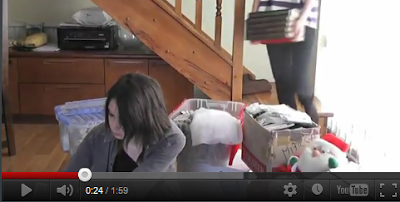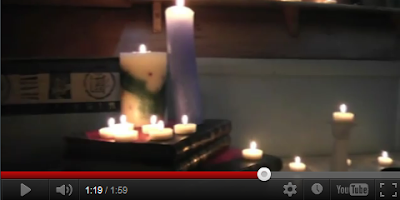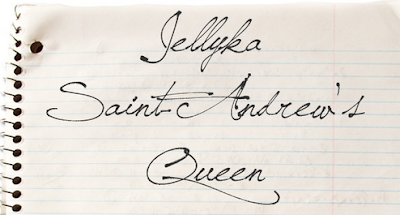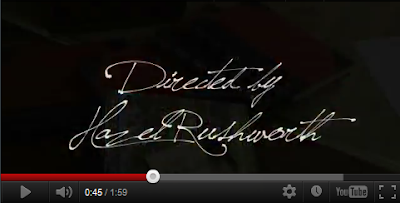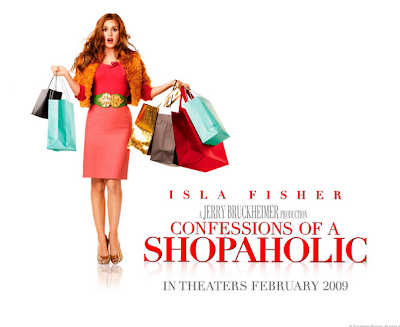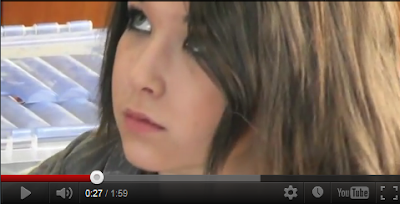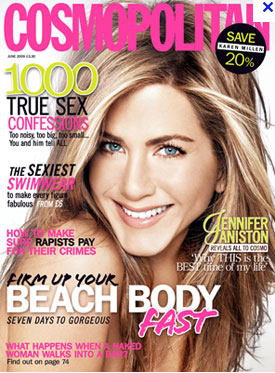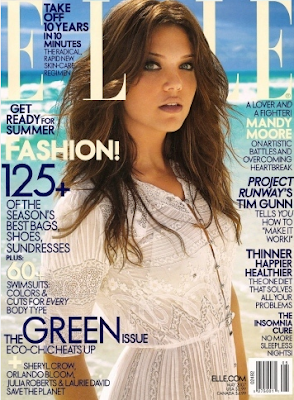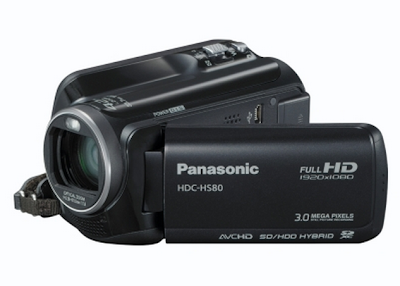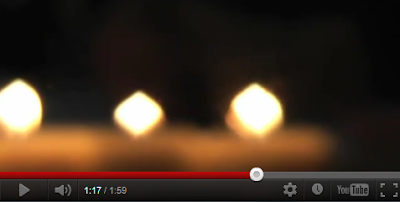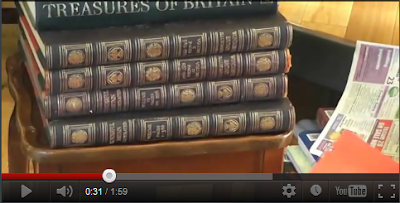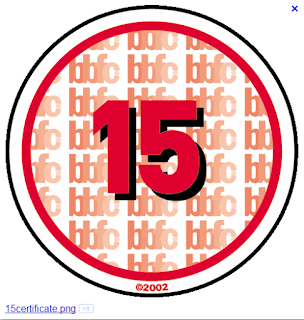Media
Evaluation: Group 1: Hazel Rushworth
1: In what
ways does your media product use, develop or challenge forms and conventions of
real media products?
In my group we had a
tendency to stick to the general conventions of the genre in which we chose to
base our film around. This genre was firstly, a romantic film; however, after
many alterations to our storyline we based the film on romantic mystery, with mystery
being the focal point in the opening of the film. Our films’ opening uses
similar generics to National Treasure 2: Book of Secrets in which we looked at
as part of the research into the mysterious openings.
 |
| The National Treasure Book Of Secrets |
The narrative style of the product
is very much limited in the opening 2 minutes that we have created; however, it
does begin to give an idea of the storyline towards the end of the opening
section. We made the narrative to be like this as we felt it would provide more
emphasis on the main characters and the emotions that are being felt. This then
lead on to give the mystery letter more importance by being singled out as the
main focus of the storyline. The product is non-linear, and flashes back to
1564 to when the mystery letter was written. To enhance the importance of this
letter we made the flashback sequence include a monologue which was included as
a voiceover as the letter was being written. We didn’t do any research into
films that include flashbacks as we felt that this can be portrayed in a number
of ways, and in most films is highlighted by haziness and a white filter, as we
wanted the flashback to be part of the title sequence, we wanted a simple
method of including a flashback, and simply included the date in the bottom
right corner of a white screen.
The sound in the product that we
have created differs from other films that have a similar genre to the one we
created, this is because we have used slow symbolic music throughout the entire
opening sequence, where it only fades at important moments, for the bang of a
table and the voiceover heard when the letter is being written. We chose the
music to emphasise the mood of the scene and to make the scene more effective
and realistic, other films from this genre do use music and a narrative but the
main focal point is usually on the dialogue rather than on the music. The film
27 Dresses uses both music and voiceover in the opening of the film but makes
the dialogue the focal point.
The typography used in our media
product, is similar to that used in similar films of the same genre. In 27
Dresses and Bride wars, the typography is very similar to one used in our
product, however, this is done to appeal to the target audience of the film
which is ultimately women, but, in our film, we have used a font that would
look realistic on an old letter, this font emphasises the importance of the
letter and tells the audience that this is an important factor in the film.
 |
| The 27 dresses type |
Overall, I think that te product that
we have created uses both similarities and difference in conventions of the
genre of our film and when differenced from similar films the product is still
realistic and emphasises the sections of the story that are important to the
rest of the film.
2: How does your media product
represent particular social groups?
I think that the majority of
stereotypes are simply used in the product rather than challenged; however, we
have mildly challenged the stereotype of famous, important figures in the
history of the country. Abelard and Heloise are famous for the love letters
that they wrote to each other, we have challenged these two figures by twisting
the storyline of the letters they wrote to cover up a murder in which the
committed together before they fell in love, although the couple are not
entirely present in the opening section of the film we would have challenged it
more as the film progressed. When representing young females, we have started
to challenge the typical stereotypes in the film and would have done throughout
the rest of the full length film;
We have used camera angles in
various ways throughout the opening section of the film to emphasise the
stereotype that young females are seen in. One of the shots we used was close
up looking slightly down on our main character; this made the feelings of the
character known and made her seem inferior to the absent parent in the
background. Both of these representations are following the typical stereotypes
of the characters; parents having power over the young c
 |
| The sad look. |
We also used an over the shoulder
shot to emphasise the mysterious character that is Abelard, writing his letter
to Heloise. We made it so the audience could not see the majority of this
character to emphasise the mysterious factor of the genre but also how the
character is not well known and is hiding something from everyone.
 |
| the over the shoulder shot. |
The editing of our film is very slow
paced, allowing time for the motions of the characters to be apparent. The
editing has made the stereotype of the main character become clearer at the
beginning as the numerous transitions splitting up the clips give the impression
that the main character is not comfortable where she is and would be happier in
a different situation.
 |
| the transitions |
Both the editing of the film and the
camera shots make the main character look inferior to her peers and isolated in
her home. This is also apparent in the symbolism and the iconography of the
film.
Mise – en –scene is an important
factor of any film, in our film the main character is seen wearing dark
clothing. This combined with the dark make-up and dark hair makes the main
character look even more sad and isolated. These factors all play a part in
bringing the film together in the full length version, however, it is also
emphasises a number of important aspects of the opening sequence that are
needed before the full length story can unfold.
 |
| The costume of the main character |
All the sections of the film work
towards making the main character look sad and lonely, however, in the next
section of the film we would have started to break the traditions of this
stereotype by making small changes in her character, her becoming more
confident and strong. We also would break the stereotype with this character in
the full length film as she is the ‘hero’ of the story, which is usually a male
role, however, because an essence of romance is also present in the film, to
attract to our target audience we have broken stereotype and made the female
lead the one that comes up with all the answers.
3: What
kind of media institution might distribute your media product and why?
When researching distribution
companies, we looked into two main distributors which could distribute our
product, we decided to look into these two distributors as they had been the
distributor for some of the films that we had researched as part of our blog.
The first company we researched was Entertainment
Film Distributors; these have distributed films such as Brokeback Mountain and
17 Again. Although, these films are not necessarily in the genre of the film
that we have produced, this company has a good record of distributing and is
the largest distributor in both the UK and the Republic of Ireland.
 |
| the entertainment in video logo. |
The second
company we researched was The UK Film Council. This company has a main aim in
which they attempt to distribute non-mainstream films and make them more widely
available to cinema audiences, and support the export of UK film abroad. I
think that this would be good as it would allow our film a better chance of
getting abroad but this company is not well known and limits the types of films
in which it will be willing to distribute.
 |
| the BFI logo |
After researching these companies we
decided that the best distributor for our product would be Entertainment Film
Distributors. This is because we felt that we needed a more well-known company
to be able to provide an extra source of advertising for our film.
4: Who
would be the audience for your media product?
Before deciding what the certificate
for our film was going to be and who we were going to aim it at was discussed,
we did some research into the different certificates that are given to films
and why as we felt that this would help us when choosing who the film will
mainly be aimed at. We decided the film would receive the certificate 15. We
did this as we felt that choosing a lower certificate would restrict us too
much and choosing a higher certificate would limit the audience that are able
to view the film.
 |
| The 15 certificate logo |
The chosen audience for our film
will be females above the age of 15. They must be above this age to be able to
view the film due its certificate. I think the main group of people that go to
view this film will be the younger generation as the characters in the film
relate to their age range, making the film appeal to them. I also think that
some of the older age range would see the film as the twist in Abelard and
Heloise would make them interested into see how the story would turn out, and
would make them think about the real reason the letters were written between
them.
 |
| This represents the female gender. |
I don’t think that the lifestyle of
a person would affect whether or not they would go and view this film, however,
if they class themselves as upper-class they may be more reluctant to go and
view the film as they feel the audience is aimed at lower-class people.
The questionnaires that we produced
as part of our audience research, was a good tool to use when deciding who our
target audience should be. The results were very mixed but we went with the
majority and women said they would like to go and view the film more than men
did and therefore we chose them to be the main audience for our film, alongside
young teenagers.
5: How did
you attract/address your audience?
We addressed
our target audience in numerous ways, taking into consideration the research
that we did on the certificates of films and the feedback that we got at the
beginning of the project before the film was made. In the feedback at the
opening of the project we found that older more mature people would prefer to
watch the film as it included a sense of mystery and the unknown (the past),
this appealed to people and therefore we decided to aim our film at this
audience of 15 plus. In our film we decided that mystery was the most important
factor, and included a lot of this by using little dialogue and a lot of
transitions including fade to black and cross fades. In our feedback t the end
of the project, people said the film included a lot of mystery and made them
want to continue watching the film to find out the importance of the letter and
why the young girl finds it.
I think that
we reached our target audience in numerous ways, listening to the feedback that
we got from our questionnaire in the beginning of the project helped us decide
the features that needed to be included in the film to keep the target market
interested in the film and the storyline.
The music played
a large part in keeping the film mysterious and interesting, not including much
dialogue left the audience wanting to know more and to know the truth about
many aspects of the film. Also, the music set the mood of the opening section,
which emphasised the emotions that were being felt by the main protagonist
without her having to say anything. The camera shots and mise-en-scene also
made this a success.
The majority
of the film was successful, however, on numerous occasions when the group was
ready to film the second half of the film, there was problems with lack of
cameras or not being able to find staff. This led the group to be sat doing
very little in lessons as we had already done all the necessary things that
needed to be completed before filming. Another
thing that was successful; was the filming itself. We didn’t have any issues with weather or
environmental hazards as all the filming was done at an indoors location and
the weather didn’t affect the outcome of the film. One hazard we did incur
however, was the candles. This became a hazard only at the end of filming when
some of the wax became stuck to the table. This easily peeled off however, when
the wax had hardened. This issue was taken into consideration in the risk
assessment that took place before filming was allowed, and was said to not
cause a risk or any harm to the people present when filming.
 |
| image of the candles |
The only issue
that was raised in the audience feedback after the video was posted on the
internet was that the video was too short and should be extended. This issue
however, couldn’t have been improved as the brief clearly stated that the video
was to be a maximum of 2 minutes long.
6: What
have you learnt about technologies from the process of constructing this
product?
Many key
decisions were made during all three sections of producing this product;
however, one major decision stands out to me more than any. This is the
decision to change the genre of our film.
During the
filming period of the film, we decided as a group that the product would be
better off in the mystery genre as this was how the film was developing and the
main genre that we had chosen for the film (ROMANCE) was not evident in the film when we were producing
it. Also we decided that after changing the script and the storyboard to match
this genre it would be most appropriate, especially since the audience feedback
we conducted at the beginning of the project stated that this was one of the
most watched genres of our target market.
Other key
decisions that were made in the production of this product were the location of
where the product would be filmed. We originally stated that the book would be
found in an attic of an old house to make our film similar to the opening of
the film ‘national Treasure@ one that we looked into and researched before
deciding on the genre and the target audience to our film.
Numerous
different technologies were used at each section of production.
In
pre-production, the main technologies used included Blogger, which all of the
research we produced was posted onto and plotbot, online script writing
software on which we layed out the script in a professional style and could
easily change the dialogue at any point.
In production
of the film, we used a Panasonic HDC HS80 to film the entire product and to
transfer the film onto the macs that were used in the lessons for editing.
 |
| The camera we used. |
 |
| The macs used in the lessons |
During the editing
section of the production, we used a programme called Final Cut Express to edit
and add music to our film. All the audio that was added to the film, except the
bang of the table falling over, was from audio network.
 |
| The final cut express logo. |
 |
| Audio network logo |
I have learnt to
use a number of different programmes and technologies throughout the course of
this project. I have been taught how to use blogger, Final Cut Express,
plotbot, a Panasonic camera and the audio network Cd’s on the IMac to be able
to produce the film to such a high standard. I already knew how to upload
videos onto YouTube and Facebook and therefore needed no help in this area, but
I learnt how to embed the videos onto my blog to help with the researching elements.
7: Looking
back at your preliminary task, what do you feel you have learnt in the
progression from it to the full production?
In the preliminary task the main
brief was continuity. This meant learning and following the 180 degree rule and
knowing how to do match on actions and shot reverse-shot. The full brief was as
follows:
“Continuity task involving filming and editing a character
opening a door, crossing a room and sitting down in a chair opposite another
character, with whom she/he exchanges a couple of lines of dialogue. This task
should demonstrate match on action, shot/reverse shot and the 180-degree rule.”
If this task was succeeded, then the brief for the main task
was:
“The titles and opening of a new fiction film, to last a
maximum of two minutes.”
I have used all the skills that I learnt
in my preliminary task in the production and editing of the main task, this
includes the continuity and the 180 degree rule. I feel that I have progressed
in the use of these skills and now know how to correctly put these into action,
using correct and good shot angles to represent characters in a certain way.
The only new things that we added to
the main task that was not included in the preliminary task was the use of
music and the use of transitions.
This is mainly because the
preliminary task required the group to produce a conversation between two
characters, meaning that the two things we used in the main task were not essential
to making the preliminary task a success.
The main thing that I realised from
completing the preliminary task was who I worked well with and who acted as a
distraction or liked to complete the majority of the work without others input.
This helped me decide who it was that I wanted to work with in the main task,
allowing my skills to be utilised to the best of their ability and to help me
shine through when producing the film for the main task.
